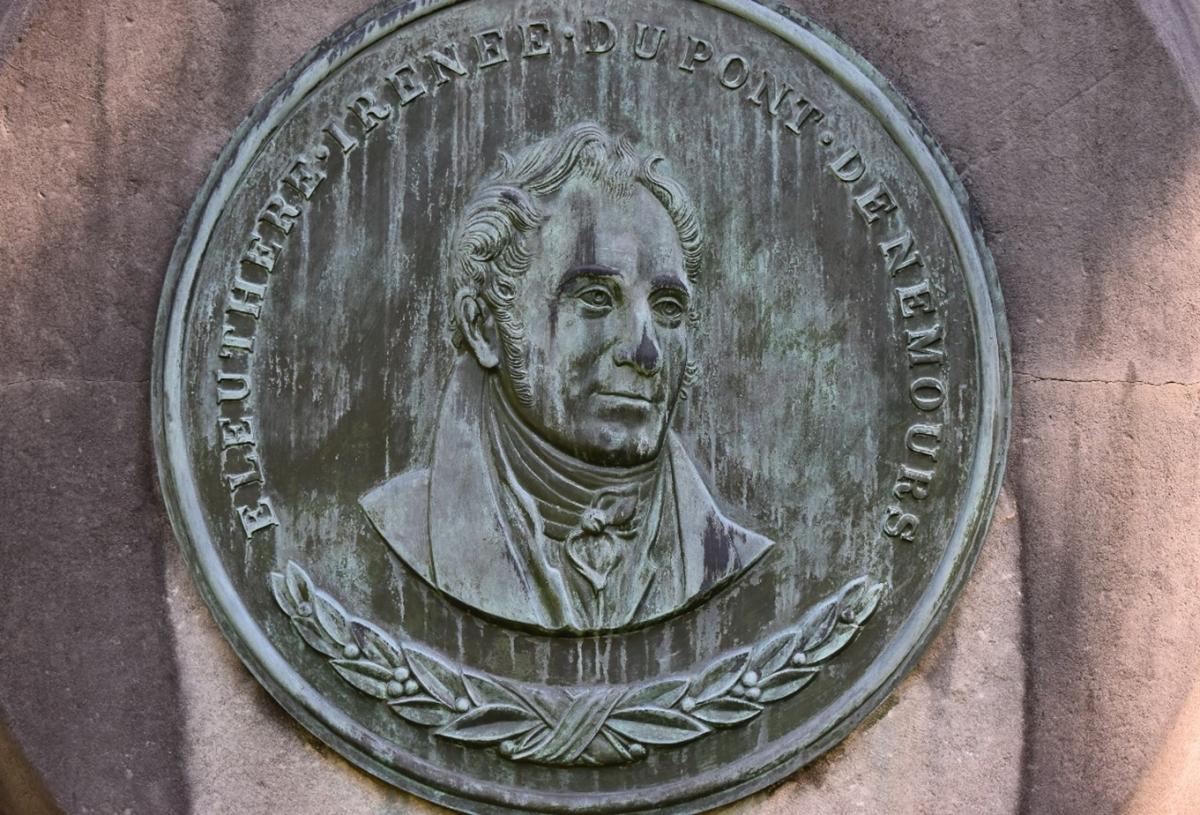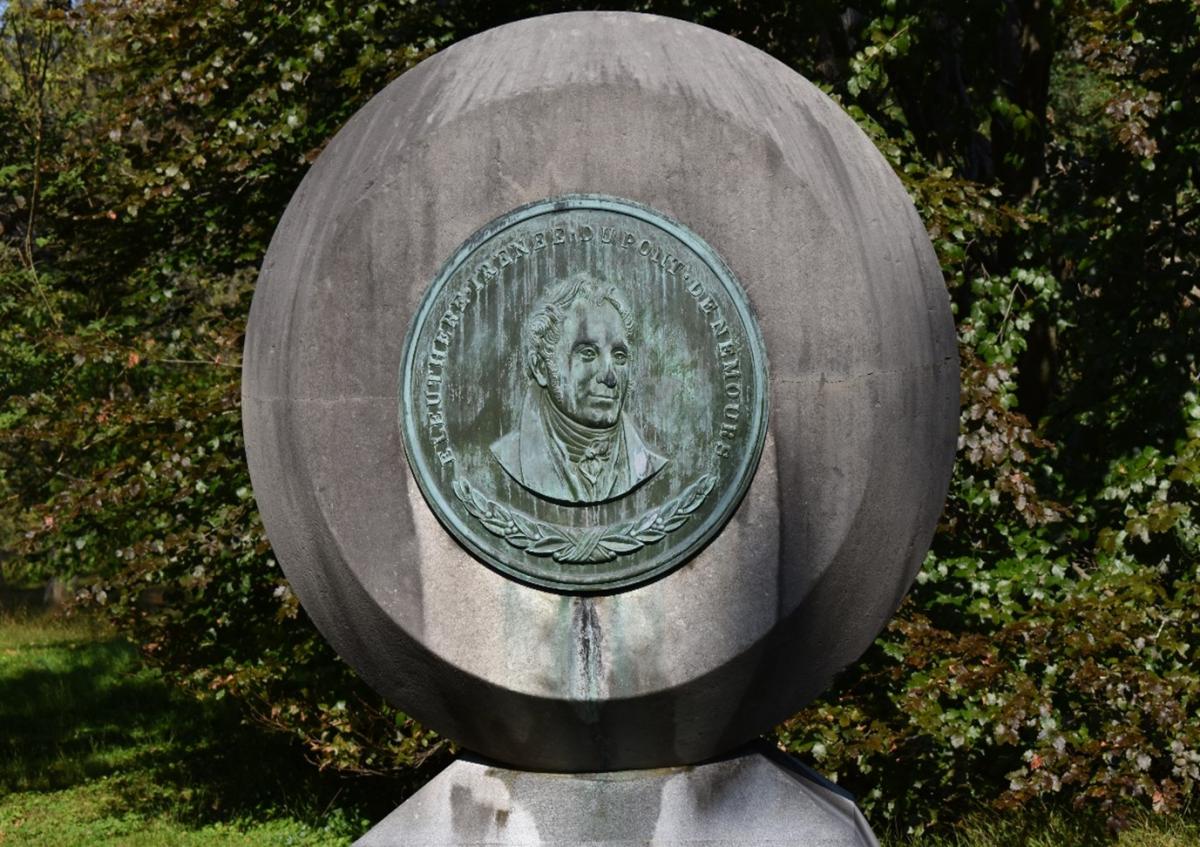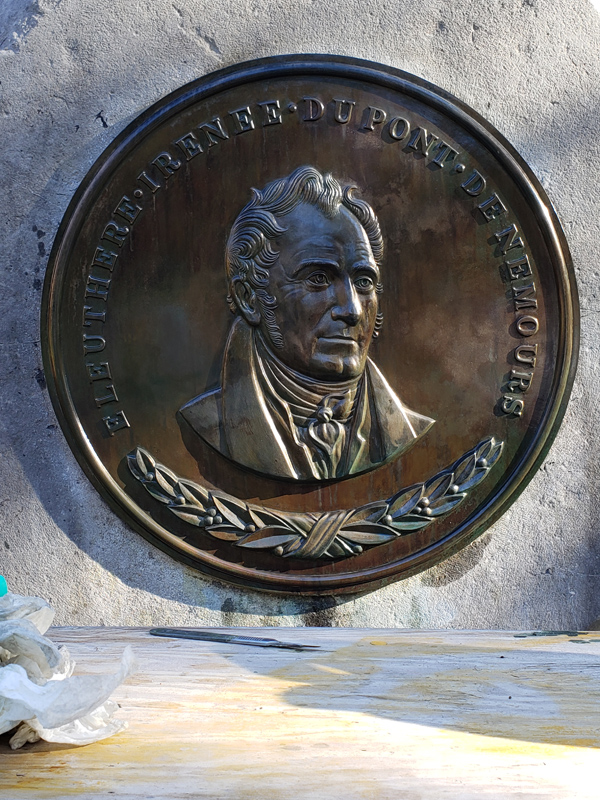In 1951, the DuPont Company commissioned Domenico Mortellito, a Wilmington, Delaware sculptor, to create a bronze plaque depicting the founder of the DuPont Company, Eleuthère Irénée du Pont de Nemours, to commemorate the 150th anniversary of the founding of the company. Construction engineering on the project was done by the Haskell Construction Company of New York, all stone works were done by the Tompkin-Kiel Marble Company, and the monument was installed in the powder yard below the Crowningshield Garden, where it has been since July 18, 1952.
The monument is composed of a limestone mill wheel imported from France, atop a granite base, with bronze sculptures on the faces of the wheel and the base. In addition to the prominent portrait of Eleuthère Irénée du Pont on the obverse of the wheel, there are also bas-relief bronze sculptures depicting the original powder mill, a Conestoga wagon, and the dedicatory statement that reads:
DEDICATED JULY 18, 1952
IN COMMEMORATION OF THE
150TH ANNIVERSARY OF
E. I. DU PONT DE NEMOURS AND COMPANY, (INC.)
The bronze has not been cleaned nor waxed since installation. The bronzes have suffered severe corrosion with surface streaking that has marred and disfigured the surface of the sculptures. Sulfur dioxide in the air from fossil fuels reacts with rainwater to form sulfuric acids that attack the bronze. The resulting green brochantites and antlerites form hard crusty disfiguring surfaces. On E. I’s portrait, light green streaks of copper corrosion have mottled and distorted the face.

Cracks that existed in the limestone wheel when it was installed in 1952 have not worsened over the seventy years. However, acid rain has attacked sections of the stone and gypsum. In combination with particulate matter from the air, hard black crusts have formed that disfigure the stone. Also, the stone is stained by black and green copper corrosion that is being washed off the bronze plaques onto the stone. The stains have become embedded in the pores of the stone.

With a generous donation from the Crestlea Foundation, the Museum Objects Conservation laboratory undertook a project to restore the monument. Catherine Matsen, Conservation Scientist at Winterthur, helped with scientific analysis of the bronzes. The bronzes were blasted with walnut shell abrasives under air pressure of 80 psi. This removed most of the loose surface corrosion and particulate matter. Hard-adhering streaks of corrosion that did not come off with the abrasive cleaning were removed with a combination of mild chemicals and mechanical means. The bronze was then coated with Incralac, an acrylic lacquer that contains Benzotriazole, a copper stabilizing compound.
Stains in the limestone wheel did not come off with simple washing and scrubbing. This was treated with Ethylenediaminetetraacetic acid (EDTA), a chelating agent that binds the copper irons in corrosion so they can be pulled off the stone.

Now that the monument has been restored, it will be washed and waxed in the fall and spring of each year to prevent further deterioration.
Ebenezer Kotei is the Objects Conservator at Hagley Museum and Library.
